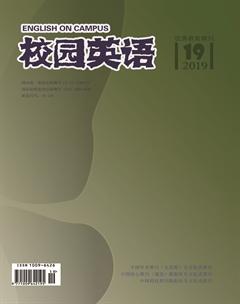Cultural Dissimilarities and Strategies in Idiom Translation
1. Introduction
Language can not exist without culture as its component. As part of language, idioms that include sayings and proverbs are characterized by their richness and vividness in their concise expressions. In translation, this special language form is greatly involved. In a broad sense, human beings share common culture and cultural similarities are the overlaps of cultural features between languages. When idioms of the source language are similar to those of the target language in terms of choice of words, collocation and social meanings, translation becomes easy because of the positive influence of cultural similarities. But a term in one language may not have a counterpart in another language. The main differences between Chinese and English idioms lie not only in the language expression ways of vocabulary, grammar, and rhetoric devices, but also in their different cultural backgrounds, because Chinese and English idioms originate from different cultures. Thus, in translation of idioms, much attention should be paid to the dissimilarities of cultures as well as languages themselves.
2. Cultural Dissimilarities
In any language, there is a profound cultural intention relative to its own physiology, convention, and religious belief, etc. Eugene Nida has categorized culture into three kinds: (1) ecology culture, (2) material culture, (3) social culture, English and Chinese idioms, closely related to their own cultures, convey different cultural features that result in great effect in idiom translation.
2.1 Regional Cultural Dissimilarities
Region cultures refer to the cultures formed by different regional environment and living conditions. Different language forms, as partial reflection of region cultures, are applied by different nations to show their attitudes towards things or phenomena. Briton is an island country where navigation business was in the lead while Chinese have lived in mainland and cultivated a love for farming and land life. So saying someone is extravagant, we say “spend money like water” in English, but “揮金如土” in Chinese. Furthermore, there many English idioms about ship and water have no counterparts in Chinese, e.g. “ to keep ones head above water”(奋力图存), “all at sea”(不知所措), “as close as an oyster”(守口如瓶), etc.
2.2 Historical Cultural Dissimilarities
History cultures are formed by special history developments and historical legacies, and composed of allusion, decrees and regulations, myths, poems, ancient books and records. Among them, allusion is most important and national. Chinese and English enjoy different historical orbits. A lot of Chinese idioms carved with obvious national characteristics are closely related to Han Culture. e.g. “有眼不识泰山”,“暗渡陈仓”,“逼上梁山”. Many English idioms are formed on the basis of famous historical events, e.g. “Cross the Rubicon and burn ones boats (bridges)”. In ancient Rome, once Caesar crossed the Rubicon with his fighters and then burned all the boats they had taken.
3. Strategies in Idiom Translation
Cultural dissimilarities are a great barrier to idiom translation. Only fully comprehend the cultural connotations of both Chinese and English idioms can we make proper translation. Some principles and methods adopted here respectively have their advantages and disadvantages.
3.1 Literal Translation
When their cultural similarities adjust positively, literal translation is used without violating the language rule and destroying expressive effect of idioms. But their messages in translation can be reduced difficultly by the readership of the target language, e.g.
(1) It must be a great comfort to you to have all the news at first hand.
能夠获得第一手消息,对你一定是莫大的安慰。
3.2 Transferred Translation
Some correspondingly stable idioms, rich in contents and metaphorical images, are formed in the development of English and Chinese languages. In translating these idioms, the original metaphorical images usually be transferred in the target language owning to cultural dissimilarities.
(1)I look at the sunlight coming in at the open door through the porch, and there I see a stray sheep--- I dont mean a sinner, but mutton; …
我往阳光射进敞着门的门廊那儿瞧,看见了一只‘迷了路的羊——我说的这只羊不是罪人, 而是宰肉吃的羊……
注:基督教把“迷途的羊”比作误入歧途得罪人。
4. Conclusion
Both Chinese and English idioms are carved with rich national cultures. The difficulty in idiom translation lies mainly in the cultural dissimilarities, the knowledge of which is one of the qualities of a translator. Any translation principle or method has more or less disadvantages. To translate English and Chinese idioms, one should cultivate his comprehensive ability of culture and develop originality.
References:
[1]邓炎昌,刘润清.语言与文化[M].外语教学与研究出版社,1989.
【作者简介】付敏荣,山东协和学院。

